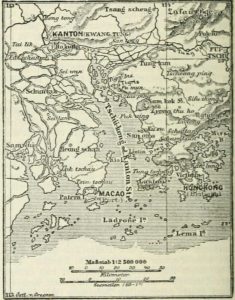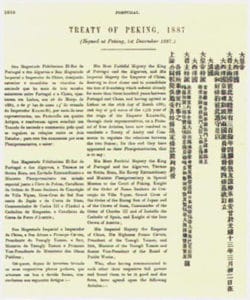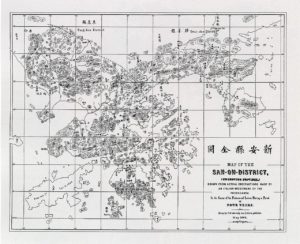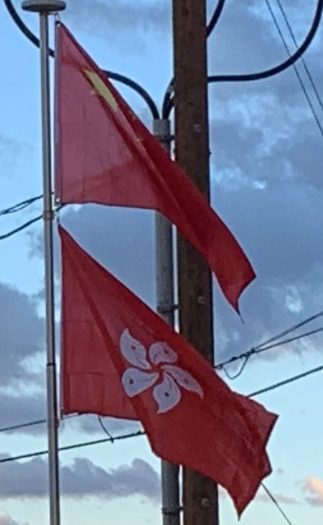The earliest European visitor was Portuguese explorer Jorge Álvares, who arrived in 1513. Portuguese merchants established a trading post called Tamão in Hong Kong waters, and began regular trade with southern China. Although the traders were expelled after military clashes in the 1520s, Portuguese-Chinese trade relations were re-established by 1549. Portugal acquired a permanent lease for Macau in 1557.

After the Qing conquest, maritime trade was banned under the Haijin policies. The Kangxi Emperor lifted the prohibition, allowing foreigners to enter Chinese ports in 1684. Qing authorities established the Canton System in 1757 to regulate trade more strictly, restricting non-Russian ships to the port of Canton. Although European demand for Chinese commodities like tea, silk, and porcelain was high, Chinese interest in European manufactured goods was insignificant, so that Chinese goods could only be bought with precious metals. To reduce the trade imbalance, the British sold large amounts of Indian opium to China. Faced with a drug crisis, Qing officials pursued ever-more-aggressive actions to halt the opium trade.
In 1839, the Daoguang Emperor rejected proposals to legalize and tax opium and ordered imperial commissioner Lin Zexu to eradicate the opium trade. The commissioner destroyed opium stockpiles and halted all foreign trade, triggering a British military response and the First Opium War. The Qing surrendered early in the war and ceded Hong Kong Island in the Convention of Chuenpi. However, both countries were dissatisfied and did not ratify the agreement. After more than a year of further hostilities, Hong Kong Island was formally ceded to the United Kingdom in the 1842 Treaty of Nanking.

Administrative infrastructure was quickly built by early 1842, but piracy, disease, and hostile Qing policies initially prevented the government from attracting commerce. Conditions on the island improved during the Taiping Rebellion in the 1850s, when many Chinese refugees, including wealthy merchants, fled mainland turbulence and settled in the colony. Further tensions between the British and Qing over the opium trade escalated into the Second Opium War. The Qing were again defeated, and forced to give up Kowloon Peninsula and Stonecutter’s Island in the Convention of Peking. By the end of this war, Hong Kong had evolved from a transient colonial outpost into a major entrepôt. Rapid economic improvement during the 1850s attracted foreign investment, as potential stakeholders became more confident in Hong Kong’s future.

The colony was further expanded in 1898, when Britain obtained a 99-year lease of the New Territories. The University of Hong Kong was established in 1911 as the territory’s first institution of higher education. Kai Tak Airport began operation in 1924, and the colony avoided a prolonged economic downturn after the 1925–26 Canton–Hong Kong strike. At the start of the Second Sino-Japanese War in 1937, Governor Geoffry Northcote declared Hong Kong a neutral zone to safeguard its status as a free port. The colonial government prepared for a possible attack, evacuating all British women and children in 1940. The Imperial Japanese Army attacked Hong Kong on 8 December 1941, the same morning as its attack on Pearl Harbor. Hong Kong was occupied by Japan for almost four years before Britain resumed control on 30 August 1945.
